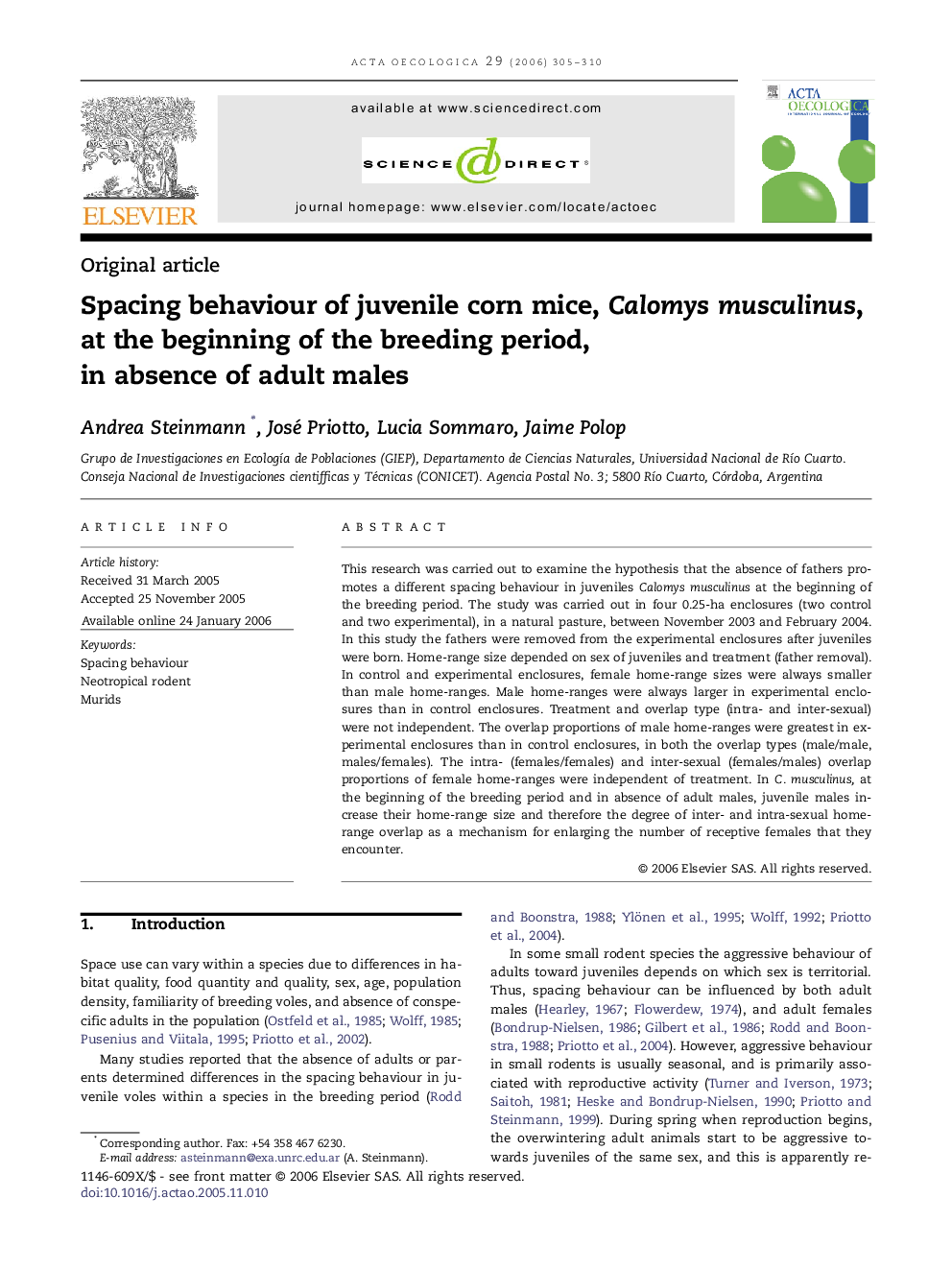| Article ID | Journal | Published Year | Pages | File Type |
|---|---|---|---|---|
| 4381752 | Acta Oecologica | 2006 | 6 Pages |
This research was carried out to examine the hypothesis that the absence of fathers promotes a different spacing behaviour in juveniles Calomys musculinus at the beginning of the breeding period. The study was carried out in four 0.25-ha enclosures (two control and two experimental), in a natural pasture, between November 2003 and February 2004. In this study the fathers were removed from the experimental enclosures after juveniles were born. Home-range size depended on sex of juveniles and treatment (father removal). In control and experimental enclosures, female home-range sizes were always smaller than male home-ranges. Male home-ranges were always larger in experimental enclosures than in control enclosures. Treatment and overlap type (intra- and inter-sexual) were not independent. The overlap proportions of male home-ranges were greatest in experimental enclosures than in control enclosures, in both the overlap types (male/male, males/females). The intra- (females/females) and inter-sexual (females/males) overlap proportions of female home-ranges were independent of treatment. In C. musculinus, at the beginning of the breeding period and in absence of adult males, juvenile males increase their home-range size and therefore the degree of inter- and intra-sexual home-range overlap as a mechanism for enlarging the number of receptive females that they encounter.
